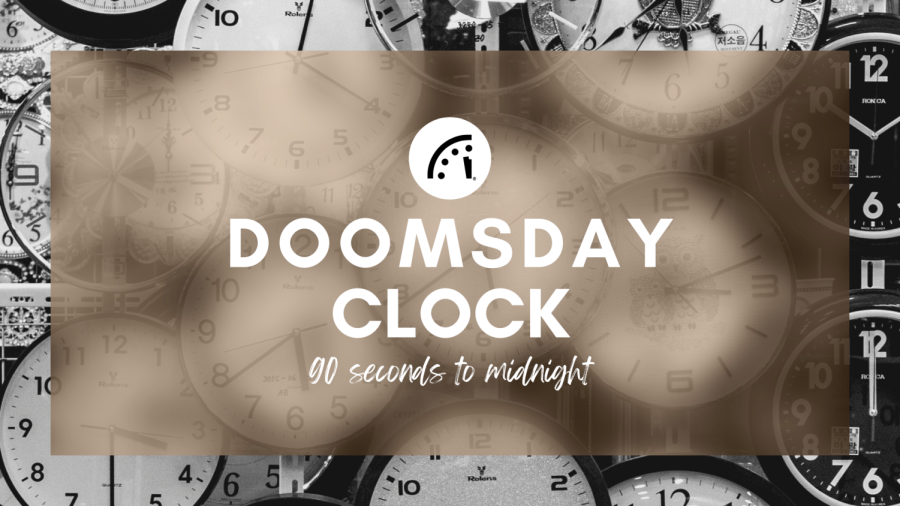Scientific community moves Doomsday Clock 10 seconds forward
Created in 1947, the Doomsday Clock was originally set to 7 minutes before midnight, with the furthest it has been totaling 17 minutes away.
An annual tradition for the past 76 years, the doomsday clock measures the state of the world, where midnight represents reaching a global catastrophe. Last Tuesday, it was moved 10 seconds forward, making the time 90 seconds to midnight.
“I don’t think it’s likely [to see a global catastrophe during this time period]. Most wealthy countries know that when there is large-scale conflict between wealthy countries, there is a lot of destruction and that destruction is a net negative. So the consequences are too great,” said AP World teacher Christopher Murphy.
Some of the main factors that play into how the Bulletin of the Atomic Scientists define their calculation are nuclear proliferation, climate change, global attitudes, and more. In the past two years, the clock reached a new height of 100 seconds to midnight due to the COVID-19 pandemic and inaction against climate change. However, it was broken this year mainly because of the ongoing Russia-Ukraine conflict.
“When it moves forward, we can see the world is rapidly changing for the worse. So many countries have nuclear weapons and that list is only going to grow and climate change is only going to get worse and worse. People are just ignoring it and all these problems are mounting on and on,” said Shaurya Shrivastava (‘25).
In 1991, the clock was the furthest away from midnight because the Cold War ended and both the US and Russia came to terms to significantly reduce their nuclear arsenal. Since its debut, the clock has adapted its working definition to include more than just nuclear weapons, incorporating technological advancements that could pose a danger to society.
“We have not really developed new technologies that are going to improve lifespan. I think that era came two centuries ago, but now we are not seeing much progress. Rather, we are moving backwards with some unfortunate situations,” said Shrivastava.
The intention behind creating this clock was to bring awareness of worldwide issues to the public and inspire action as humanity faces more and more self-imposed problems.
“[Moving the clock backwards] depends on how the issues are going to be addressed and what actions are going to be taken against it. If we were to ignore these issues, it would definitely end up with the clock moving forward but I think it is important for global leaders and individuals to take [the clock] as a warning,” said Shlok Sharma (‘25).
Your donation will support the student journalists in the AVJournalism program. Your contribution will allow us to purchase equipment and cover our annual website hosting costs.

